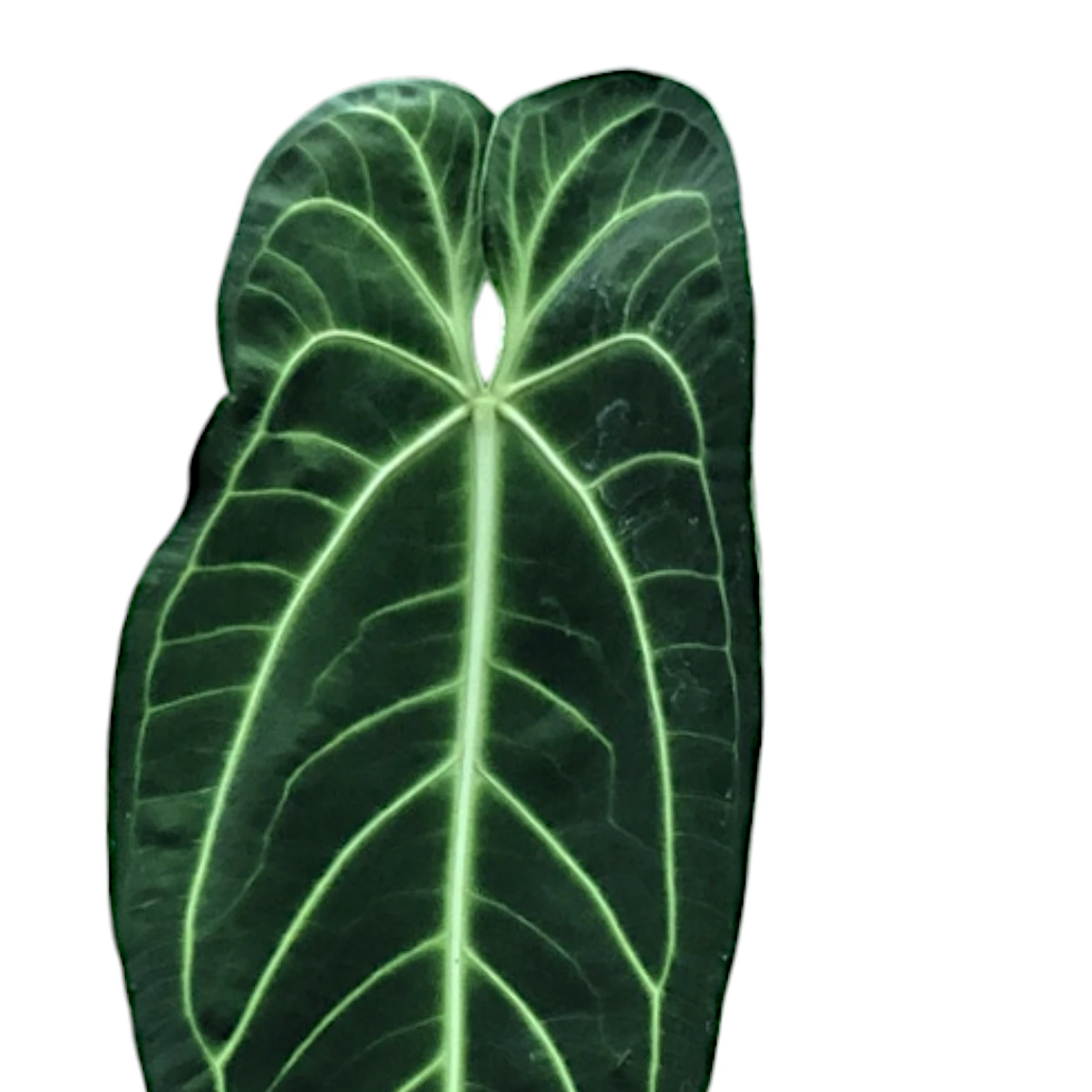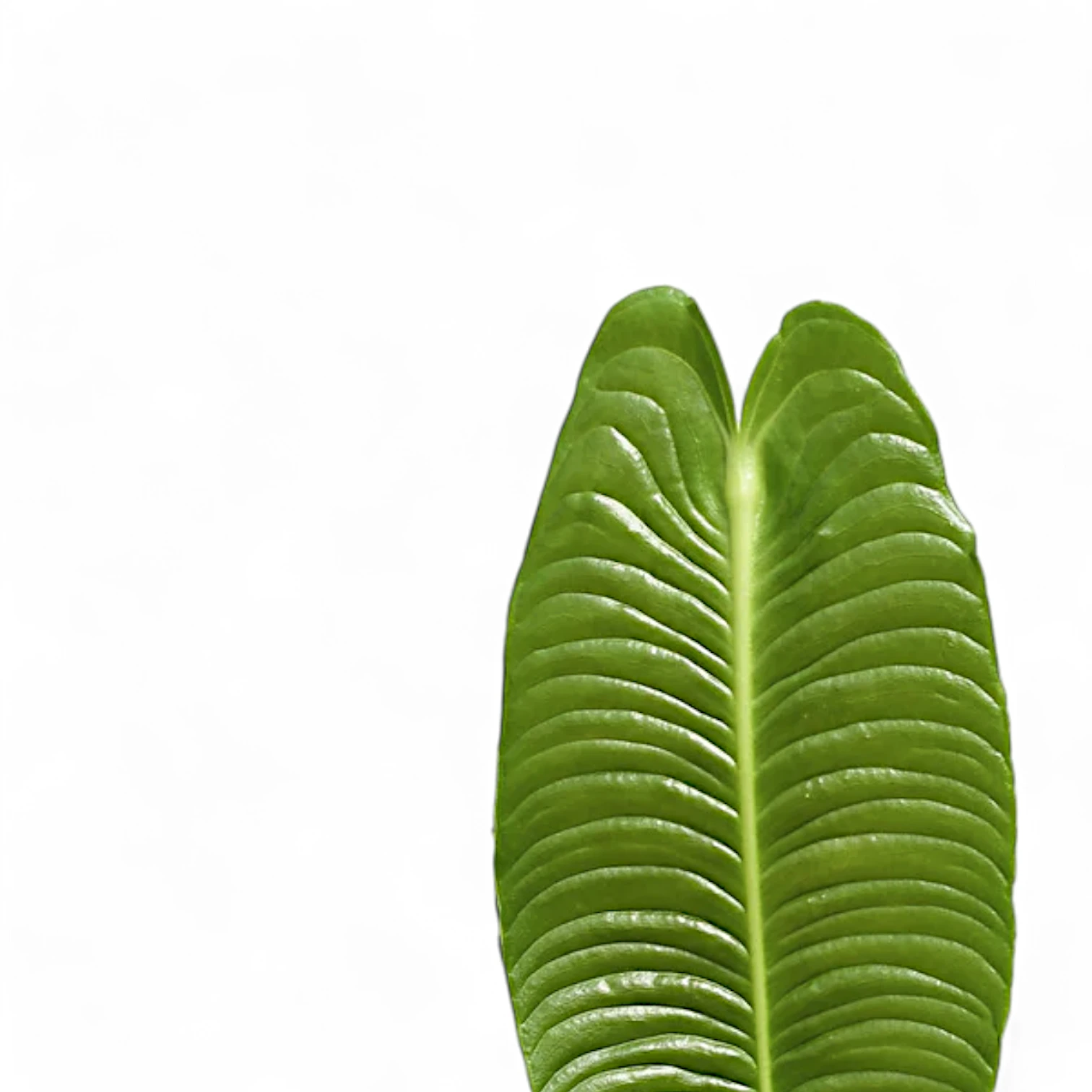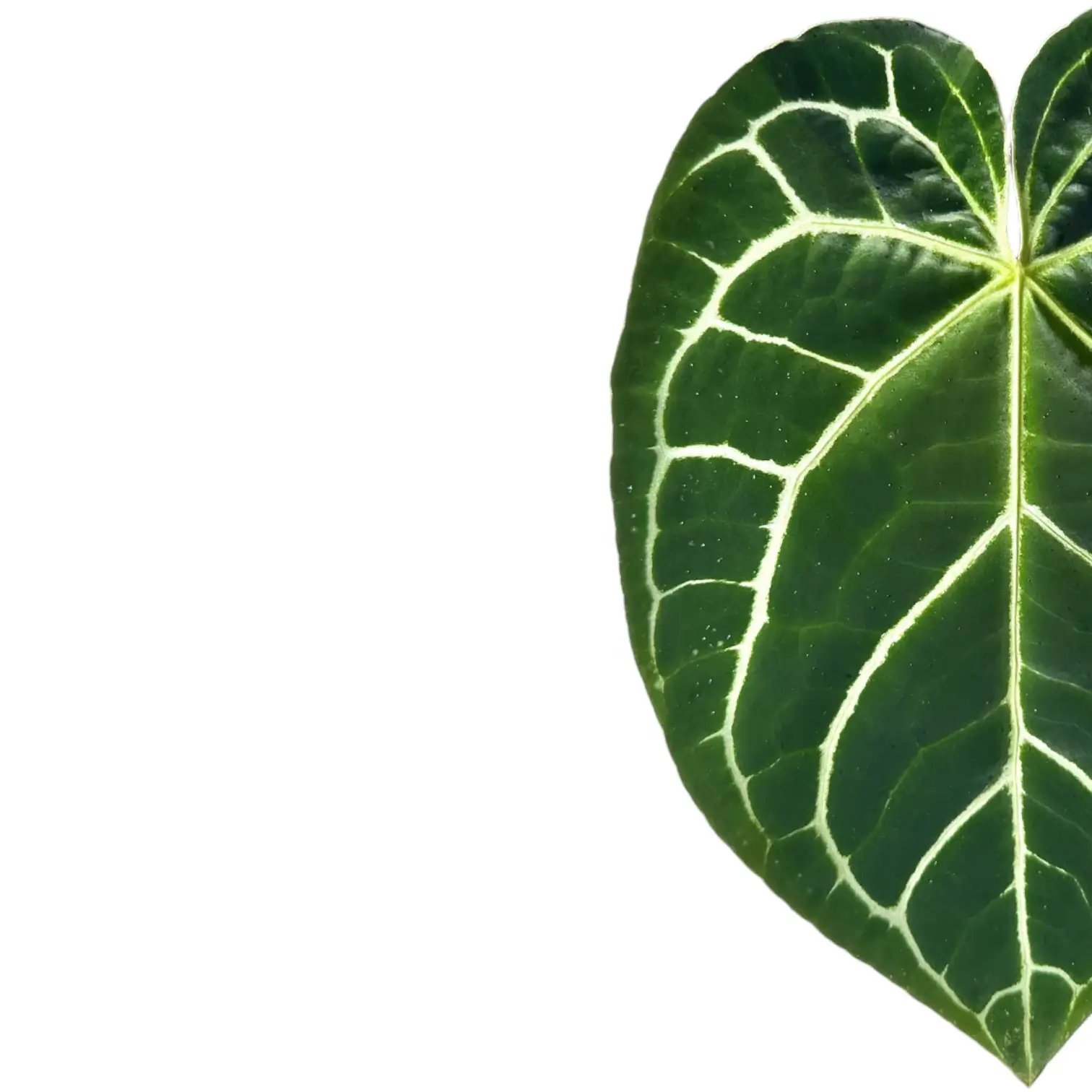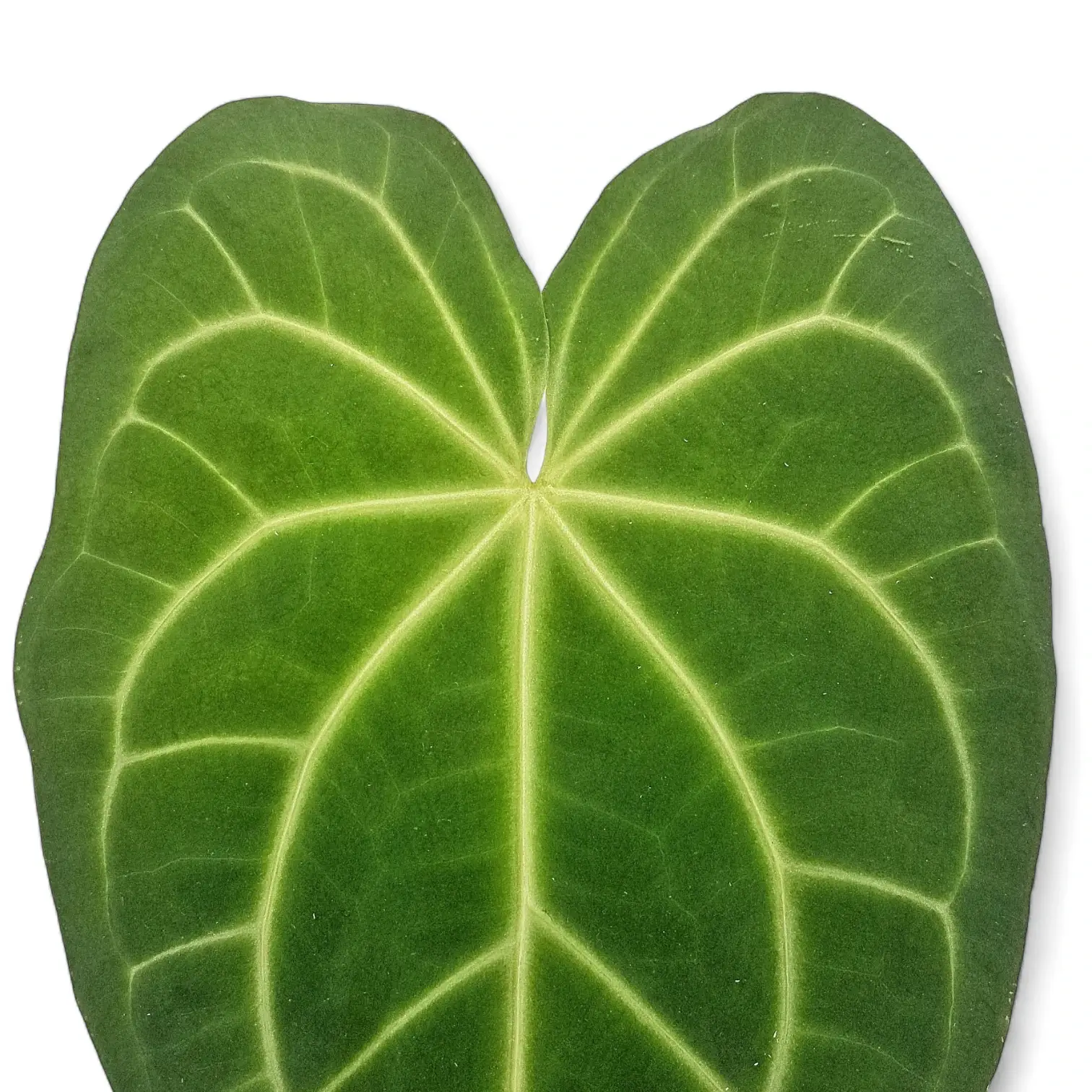
Anthurium Plants
Anthurium genus plant care and information
A comprehensive guide to Anthurium care, natural habitat, and botanical information. Discover essential Anthurium care tips, detailed instructions, and practical solutions for common issues like watering, lighting, and humidity. Learn about the natural environment of Anthurium species, how to grow Anthurium plants successfully indoors, and how to address common challenges effectively. Explore the diversity of the Anthurium genus, including their unique habitats and characteristics, to find the perfect Anthurium species for your space. Whether you're a seasoned plant lover or taking your first steps into plant care, there's an Anthurium to suit every collection. Find out more about Anthurium care and add the perfect Anthurium plant to your collection today.


Anthurium
/ˈænθjʊriəm/ (AN-thur-ee-um)
➜ Name derived from Greek anthos (flower) and oura (tail), referring to the spadix structure.
➜ Described by Heinrich Wilhelm Schott in 1829.
➜ Family: Araceae, subfamily: Pothoideae
➜ Over 1,000 recognized species.
➜ Native to Central and South America, especially Colombia, Ecuador, and Panama.

Anthurium Plant Care: The Ultimate Guide for Healthy Growth
Please note: Each Anthurium species or cultivar has unique needs, especially between velvety-leaf types and flowering hybrids. This guide offers detailed general care, but always research the specific requirements of your plant—particularly for rare, climbing, or foliage-focused varieties.
📌 Did you know? Our Anthurium shop listings include detailed, variety-specific care instructions tailored to growth habit, humidity, and light needs!
️Light Requirements for Anthurium
✔ Most Anthuriums prefer bright, indirect light.
✔ Velvet-leaved species (like A. warocqueanum) are sensitive to direct sun and need diffused light.
✔ Flowering types (like A. andraeanum) need more light to bloom reliably.
⚠️ Direct sunlight causes leaf scorch and dehydration.
📌 Tip: Rotate the plant weekly to ensure even exposure and balanced growth.
Temperature & Climate for Anthurium
✔ Ideal range: 18–27°C (65–80°F).
✔ Minimum tolerated temp: 15°C (59°F); prolonged exposure below this slows growth.
✔ Prefers consistent warmth and dislikes temperature swings.
📌 Tip: Use a thermometer near the plant to track nighttime dips and protect from drafts.
Watering Routine
✔ Water when the top 4–5 cm (1.5–2 inches) of substrate is dry.
✔ Keep soil slightly moist but never soggy.
✔ Use room-temperature, dechlorinated water to avoid root stress.
📌 Tip: Water less frequently in lower light or cooler months, but don't allow roots to fully dry out.
Anthurium Soil Mix
✔ Use a chunky, well-aerated mix. Ideal components include:
-
40% orchid bark (structure & drainage)
-
30% coco coir or peat-free substrate (moisture retention)
-
10% compost or worm castings (nutrition)
📌 Tip: Add activated charcoal to reduce bacterial growth and keep roots healthy.
Humidity Needs for Anthurium
✔ Most species thrive in 60–80% humidity.
✔ Velvet-leaved types need higher humidity (70%+) to avoid leaf crisping.
✔ Flowering hybrids are more tolerant but still prefer 50%+.
📌 Tip: Skip misting and use a humidity monitor—humidifiers are more effective and consistent.
Feeding & Fertilization
✔ Apply a balanced, liquid fertilizer monthly at 1/4–1/2 strength.
✔ Use formulas with extra calcium and magnesium for velvety species.
✔ Fertilize consistently during active growth to support foliage and bloom.
📌 Tip: Flush the soil every 6–8 weeks to prevent salt buildup from liquid feeds.
Repotting & Root Health
✔ Repot every 1–2 years, or when roots circle the pot or outgrow drainage holes.
✔ Choose a pot only 2–3 cm wider to avoid overwatering risk.
✔ Use breathable containers—terracotta or slotted orchid pots encourage air flow.
📌 Tip: Check aerial roots during repotting—they can be tucked back into the substrate.
Leaf Cleaning & Plant Maintenance
✔ Wipe leaves regularly with a damp microfiber cloth or special microfiber gloves to remove dust.
✔ Avoid using commercial leaf shines—they clog pores and attract pests.
✔ Trim old or yellowing leaves at the base with sterilized scissors.
📌 Tip: Add insecticide soap to your cloth/ gloves once a month to deter pests while cleaning.
Growth Support & Pruning
✔ Climbing species benefit from support poles or trellises for stability and leaf development.
✔ Prune leggy stems or non-functional aerial roots to shape the plant.
✔ Rotate regularly to maintain symmetry.
📌 Tip: Use sphagnum moss on support poles to encourage aerial root growth.
Anthurium Propagation
✔ Best methods include:
-
Division: Separate mature clumps during repotting, ensuring each has roots and growth points.
-
Stem cuttings: Cut segments with nodes and root in moist sphagnum or water.
-
Aerial root cuttings: Use pieces with existing aerial roots for faster establishment.
📌 Tip: Cover new cuttings with a humidity dome or plastic bag to retain moisture during rooting.
Flowering Behavior & Blooming Tips
✔ Decorative flowering A. andreanum hybrids bloom under consistent bright light and warmth.
✔ Use phosphorus-rich fertilizer to promote bloom spikes.
✔ Spathes fade over time—cut spent blooms at the base to encourage new ones.
✔ Not flowering? Increase light, raise humidity, and check nutrient levels.
📌 Tip: Rest periods between flowering cycles are normal—patience and care will reward you.
Growing Anthurium in Semi-Hydroponics
Many Anthurium species thrive in semi-hydroponic setups when given the right conditions. Semi-hydro helps improve oxygenation, reduce rot risk, and stabilize watering routines—especially useful for velvety or slow-growing types.
Best Substrate Types
Use an inert, airy medium that allows root breathability and moisture control. Excellent options include:
-
Pon (volcanic rock blend with zeolite and pumice)
-
Perlite
-
Crushed lava rock or pumice (5–10 mm size)
-
Expanded basalt or zeolite blends used in hydroponics
-
LECA
📌 Tip: Always rinse substrates thoroughly before first use to remove dust or impurities that can clog roots or wick poorly.
Watering & Reservoir Setup
-
Use net pots or slotted nursery pots placed above a water reservoir.
-
Maintain a constant water level of ~2–4 cm in the bottom of the outer container.
-
Ensure wicking contact between the substrate and the water source, so roots access moisture without sitting in stagnant water.
📌 Tip: Add an inert wick (cotton rope or microfiber) if your substrate doesn't wick efficiently on its own.
Water Quality & Maintenance
-
Use filtered, rain, or distilled water to avoid salt buildup.
-
Refill with clean water as it evaporates—but flush the entire system every 2–3 weeks.
-
Optionally, use hydroponic nutrients diluted to ¼ strength in the reservoir every 2 weeks.
📌 Tip: Keep an eye out for algae—if your container is clear, wrap it in fabric or foil to block light.
Root Transition Tips
-
If moving from soil to semi-hydro, wash all soil off roots thoroughly before potting.
-
Expect some leaf yellowing or slowed growth during the first 2–4 weeks as roots adapt.
-
Cut off any mushy or damaged roots before transferring to the new setup.
📌 Tip: Add a layer of sphagnum moss on top of the semi-hydro medium during the transition phase to increase humidity near the crown.

FURTHER READING FOR ANTHURIUM GENUS
Databases & Resources on Anthurium
1. Kew Science – Plants of the World Online (POWO)
https://powo.science.kew.org
Comprehensive taxonomic database from the Royal Botanic Gardens, Kew. Includes accepted names, synonyms, species distribution, and botanical references for all Anthurium species.
2. Tropicos (Missouri Botanical Garden)
https://www.tropicos.org
Missouri Botanical Garden’s nomenclatural and specimen-based database. Provides publication info, type specimens, synonyms, and herbarium records for Anthurium.
3. GBIF – Global Biodiversity Information Facility
https://www.gbif.org
Aggregates species occurrence data from global institutions. Use this to explore Anthurium’s native ranges, habitat records, and biodiversity patterns.
4. International Aroid Society (IAS)
https://www.aroid.org/
The world’s leading community for aroid enthusiasts. Offers access to the journal Aroideana, cultivation tips, species galleries, and expert taxonomic insights.
5. ExoticRainforest.com (Steve Lucas’s Aroid Resource)
http://www.exoticrainforest.com/
An archived, detailed knowledge base of firsthand Anthurium growing experience, hybrid notes, and cultivation advice, often cited by aroid collectors and professionals.
6. Missouri Botanical Garden – Plant Finder
https://www.missouribotanicalgarden.org
Trusted horticultural database with care details for Anthurium species and cultivars, including soil, watering, temperature, and propagation information.
Publications:
The following publications provide extensive insights into the taxonomy, phylogeny, cultivation, and breeding of Anthurium species. For access to full texts, please refer to the provided links or consult academic databases and libraries.
Croat, T.B. (1986). A Revision of the Genus Anthurium (Araceae) of Mexico and Central America, Part I: Mexico
and Middle America, Annals of the Missouri Botanical Garden, Vol. 70, No. 2 (1983), pp. 211-416
Croat, T.B. (1986). A Revision of the Genus Anthurium (Araceae) of Mexico and Central America, Part II: Panama. Monographs in Systematic Botany from the Missouri Botanical Garden, 14, 1–204.
Fascella, G., & Zizzo, G.V. (2007). Preliminary Results of Aeroponic Cultivation of Anthurium andreanum for Cut Flower Production. Acta Horticulturae, 747, 233–238.
Chang, K.H., Wu, R.Y., Chuang, K.C., & Chung, R.S. (2010). Effects of Chemical and Organic Fertilizers on the Growth, Flower Quality, and Nutrient Uptake of Anthurium andreanum Cultivated for Cut Flower Production. Scientia Horticulturae, 125(2), 434–441.
Dufour, L., & Guérin, V. (2005). Nutrient Solution Effects on the Development and Yield of Anthurium andreanum Lind. in Tropical Soilless Conditions. Scientia Horticulturae, 105(2), 269–282.
Croat, T.B., & Sheffer, R.D. (1983). The Sectional Groupings of Anthurium (Araceae). Aroideana, 6(3), 85–123.
Higaki, T., & Imamura, J.S. (1985). Anthurium Culture in Hawaii. Research Extension Series, 056. University of Hawaii.
Temponi, L.G., & Coan, A.I. (2017). Floral Vasculature and Its Variation for Carpellary Supply in Anthurium (Araceae, Alismatales). PeerJ, 5, e2929.
Valadares, R.T., Calazans, L.S.B., Mynssen, C.M., & Sakuragui, C.M. (2021). Beyond the Typological Characters: A Morphometric Approach to Vegetative Characters in Anthurium Schott (Araceae) Species. Brazilian Journal of Botany, 44, 715–725.
Poli, L.P., Temponi, L.G., & Coan, A.I. (2017). Floral Vasculature and Its Variation for Carpellary Supply in Anthurium (Araceae, Alismatales). PeerJ, 5, e2929.
Carlson, M.M., & Croat, T.B. (2013). A Molecular Phylogeny of the Species-Rich Neotropical Genus Anthurium (Araceae) Based on Combined Chloroplast and Nuclear DNA. Systematic Botany, 38(3), 576–588.
Bliss, B.J., & Suzuki, J.Y. (2012). Genome Size in Anthurium Evaluated in the Context of Karyotypes and Phenotypes. AoB PLANTS, 2012, pls006.
Croat, T.B. (1991). A Revision of Anthurium Section Pachyneurium (Araceae). Annals of the Missouri Botanical Garden, 78(3), 539–855.
Carlson, M.M., & Croat, T.B. (2007). Taxonomic Revision of Anthurium Section Semaeophyllium Schott (Araceae). Harvard Papers in Botany, 12(1), 173–234.
Govaerts, R., & Frodin, D.G. (2002). World Checklist and Bibliography of Araceae (and Acoraceae). The Board of Trustees of the Royal Botanic Gardens, Kew.
Chen, J., et al. (2009). Cultural Guidelines for Commercial Production of Interiorscape Anthurium. Environmental Horticulture Department, Florida Cooperative Extension Service, University of Florida IFAS.
Higaki, T., Poole, R.T., & Healy, W. (1992). Anthurium Culture and Anthurium Blight. University of Hawaii, Research Extension Series, 136.
Link
EXPLORE ANTHURIUM VARIETIES
Our Best-Selling Anthurium Varieties and Species
Discover our most popular Anthurium varieties that have captured the hearts of plant lovers everywhere. From vibrant flowers to stunning foliage, these best-sellers are known for their unique beauty and easy care. Explore which of these Anthurium species will make the perfect addition to your indoor garden.
Anthurium warocqueanum: Velvet Leaf Anthurium for Tropical Elegance
Anthurium warocqueanum, also called the Queen Anthurium, is a showstopper among houseplants with its extraordinary, elongated leaves. This rare tropical plant hails from the rainforests of Colombia and is loved for its impressive, velvety foliage that can reach over a meter in length. The deep green leaves are highlighted by prominent white veins that add an elegant, contrasting design, making it the perfect centerpiece for any indoor jungle. Anthurium warocqueanum prefers bright, indirect light and high humidity to thrive, which is essential for keeping the velvety texture intact.
For best results, grow Anthurium warocqueanum in a well-draining, airy mix, such as one designed for epiphytes, to keep its roots healthy. Water when the top few centimeters of soil feel dry, but avoid letting it dry out entirely, as this plant prefers consistent moisture without sitting in waterlogged conditions. Humidity levels above 70% are crucial to prevent crisping along the leaf edges, and a monthly feeding with diluted fertilizer will promote vibrant growth. Place it in a spot that gets plenty of indirect light to maintain its stunning leaf coloration.
Anthurium warocqueanum may require extra attention, but the payoff is undeniable. Consistent conditions are key—steady warmth, high humidity, and the right light will yield dramatic, lush growth that turns heads. This Anthurium shines best in a stable environment, such as a greenhouse or a humid room, where its tropical beauty can be appreciated. Add Anthurium warocqueanum to your collection today, and elevate your space with the luxurious, velvet foliage of this striking plant.
Anthurium veitchii: King Anthurium with Rippling Royalty
Anthurium veitchii, often known as the "King Anthurium," stands out for its textured, rippled leaves that exude a regal quality. Native to the Colombian rainforest, this epiphytic species is famous for its striking, corrugated foliage, which can grow up to 1.5 meters long under ideal conditions. These leathery, elongated leaves feature a unique, glossy texture that adds instant drama and depth to any plant collection. Whether showcased as a floor-standing feature or suspended from a mount, Anthurium veitchii transforms any room with its luxurious tropical vibe.
To help Anthurium veitchii thrive, mimic its natural environment by providing a well-draining, airy potting mix, such as a combination of orchid bark, perlite, and sphagnum moss. This mix keeps the roots aerated while holding onto just enough moisture. The King Anthurium loves bright but indirect light, which helps the leaves reach their full potential. Humidity above 60% is recommended to prevent browning edges, and consistent watering—allowing the top few centimeters to dry out between sessions—will keep this plant in optimal health. Monthly fertilization, at a diluted strength, will promote vigorous growth during its active season.
With a bit of patience, Anthurium veitchii rewards its grower with striking, rippled foliage that feels truly royal. Although it prefers stable conditions, its slow growth means it's relatively easy to manage, even in smaller indoor spaces. Place it in a bright spot without direct sunlight, and let its distinct, textured leaves become the centerpiece of your indoor plant display. Add this King Anthurium to your home and experience its majestic presence firsthand.
Anthurium clarinervium: Heart-Shaped Statement Plant
Anthurium clarinervium, prized for its unique heart-shaped leaves and bold veining, is a must-have for plant lovers seeking an exotic touch. Native to Mexico, this terrestrial Anthurium features thick, velvety leaves with a dark green surface contrasted by striking white veins. Its compact growth makes it ideal for smaller spaces or as an eye-catching addition to your plant shelf. Anthurium clarinervium’s foliage is almost leathery to the touch, adding to its structural charm and making it a standout feature in any room.
To care for Anthurium clarinervium, provide bright, indirect light and a high-humidity environment to mimic its native conditions. This plant thrives in a well-draining, chunky potting mix, such as one made from orchid bark, perlite, and peat moss, which ensures that its roots stay healthy without sitting in excess water. Water when the topsoil feels dry, and feed monthly with a diluted fertilizer for best results. Humidity above 50-60% is crucial for maintaining leaf health and preventing browning along the edges.
Anthurium clarinervium is best suited to those who appreciate the steady growth of a truly unique plant. It does not tolerate sudden changes in temperature or humidity well, so a consistent environment is key to preventing stress. With the right care, this Anthurium will reward you with incredible, heart-shaped leaves that look almost painted with their contrasting white veins. Bring Anthurium clarinervium into your space today to enjoy its bold, tropical beauty that captivates at every glance.
Anthurium crystallinum: Shimmering Jewel of the Tropics
Anthurium crystallinum is a favorite among houseplant enthusiasts for its large, heart-shaped leaves and shimmering veining. This tropical species, native to Central and South America, grows as an epiphyte, meaning it naturally thrives in an airy, well-draining medium. The leaves of Anthurium crystallinum range from deep emerald to light green and feature a velvety surface that appears almost metallic under the right lighting conditions. It’s a stunning addition to any indoor plant collection, providing a sophisticated tropical look.
For optimal care, Anthurium crystallinum prefers bright, indirect light that allows its signature white veins to shine. Avoid direct sunlight to prevent leaf scorch and ensure the plant receives high humidity, preferably above 60%, to maintain its velvety texture. A suitable potting mix, such as one containing orchid bark, perlite, and sphagnum moss, will provide both moisture and aeration. Water when the topsoil is dry, but never let it dry out completely, as this plant prefers consistent moisture without soggy conditions. Fertilize monthly with a diluted formula to keep its growth steady and vibrant.
Anthurium crystallinum requires consistent conditions, but its rewards are unmatched—offering leaves that shimmer and stand out in any room. This plant dislikes temperature changes, preferring a stable, warm environment where it can thrive. If cared for correctly, the plant will grow larger leaves with each new development, adding even more visual drama to your space. Bring Anthurium crystallinum home today and create a tropical statement that exudes elegance and natural luxury.
Anthurium magnificum: Majestic Velvet Anthurium
Anthurium magnificum lives up to its name with spectacularly large, velvety leaves that create a sense of grandeur. Native to Colombia, this terrestrial plant is admired for its rounded, deep green foliage that displays bold, contrasting white veins. Unlike some other Anthuriums, Anthurium magnificum’s leaves are thick and slightly leathery, giving it a sculptural, almost architectural presence. This plant is perfect as a floor-standing feature or centerpiece, where it can draw attention with its lush, tropical look.
For successful growth, provide Anthurium magnificum with bright, indirect light and a well-draining potting mix that keeps its roots healthy. A combination of orchid bark, perlite, and sphagnum moss works well to replicate its natural habitat. Keep humidity levels above 60% to maintain the health of the velvety leaves, and water regularly, allowing the top few centimeters of soil to dry out between sessions. Monthly fertilization, using a diluted solution, will promote vigorous growth and encourage larger leaves.
Anthurium magnificum is a relatively forgiving plant, especially when it comes to its tolerance for fluctuating humidity, making it easier to manage compared to other velvety Anthuriums. Consistent conditions are still key—this will help ensure the plant grows steadily and maintains the bold contrast in its veining. Display it in an area where its impressive leaves can be fully appreciated, turning any room into a showcase of tropical elegance. Add Anthurium magnificum to your collection today, and enjoy the majestic beauty of this luxurious Anthurium species.
All Our Anthurium Species and Varieties:
For a look at all available Anthurium plants, head to the Anthurium Collection in our Shop. Each listing features a detailed description along with specific care instructions.





















































